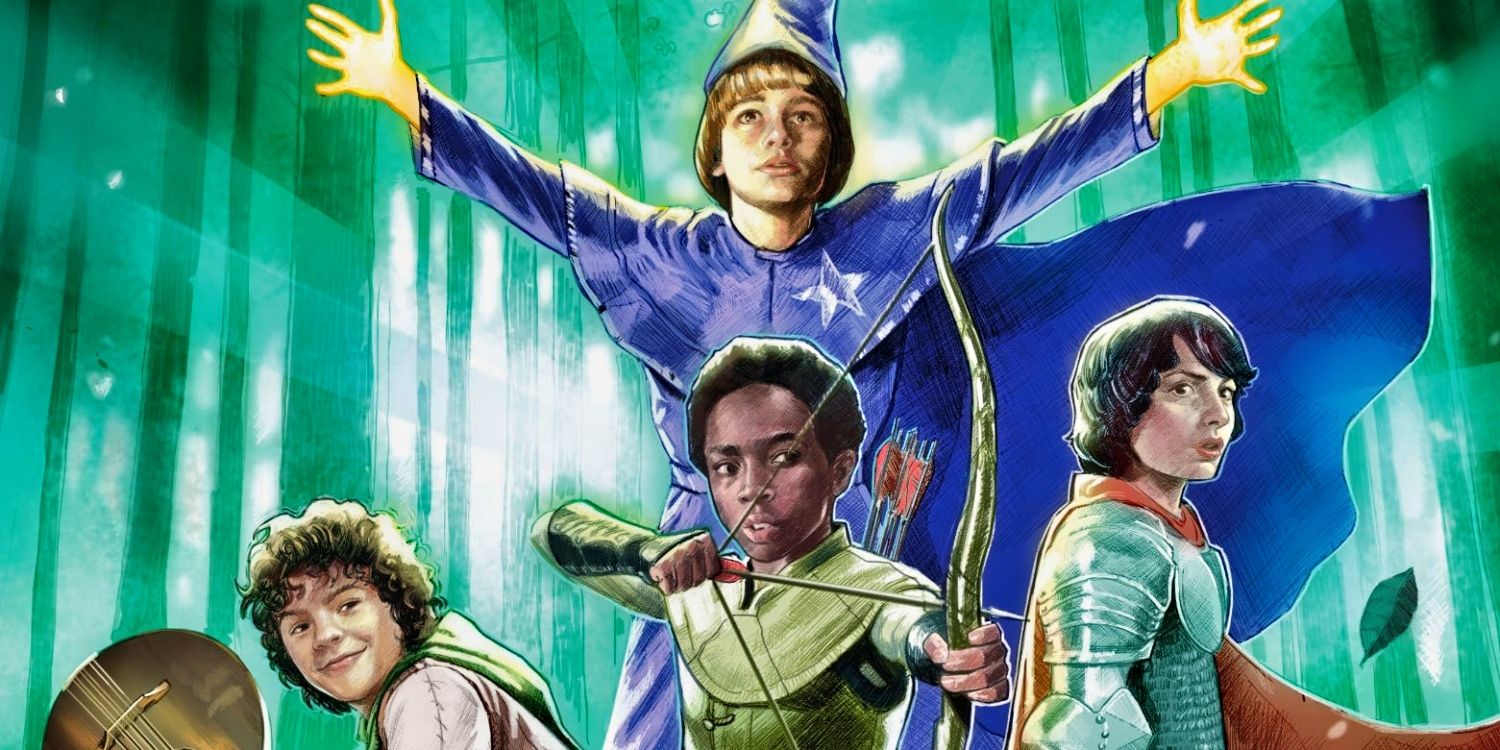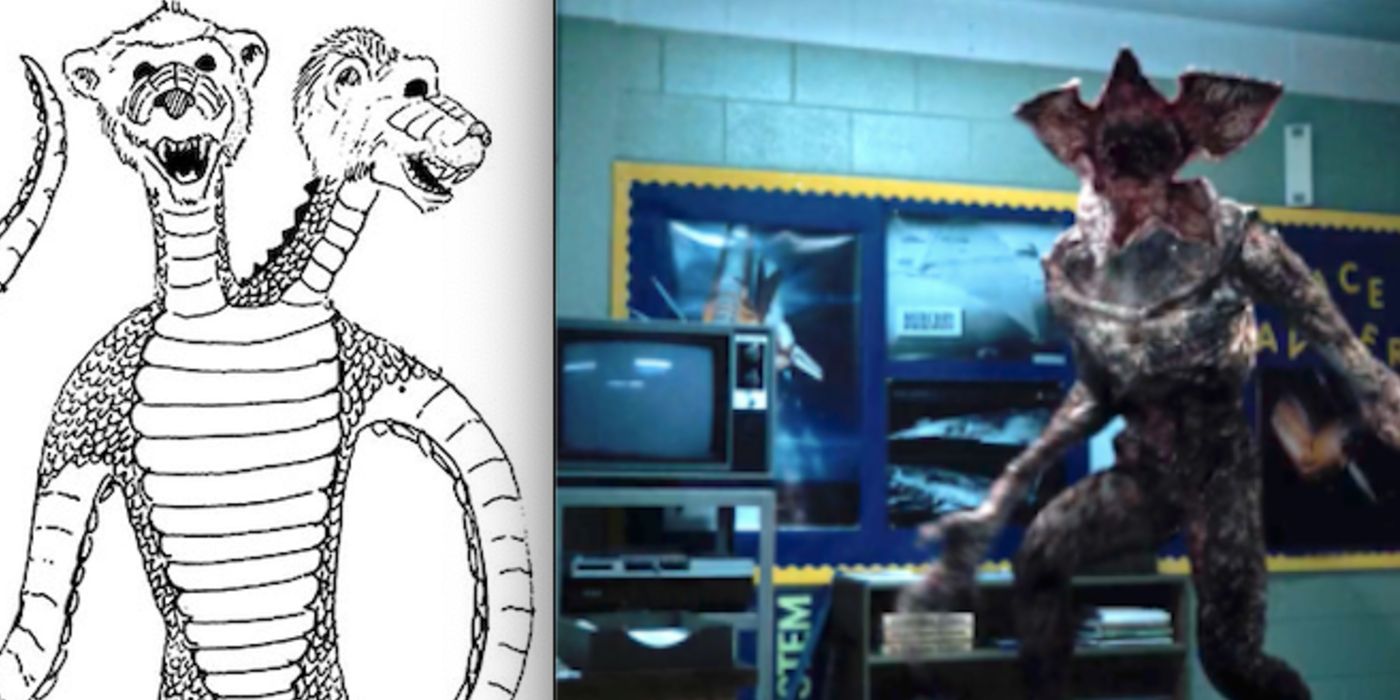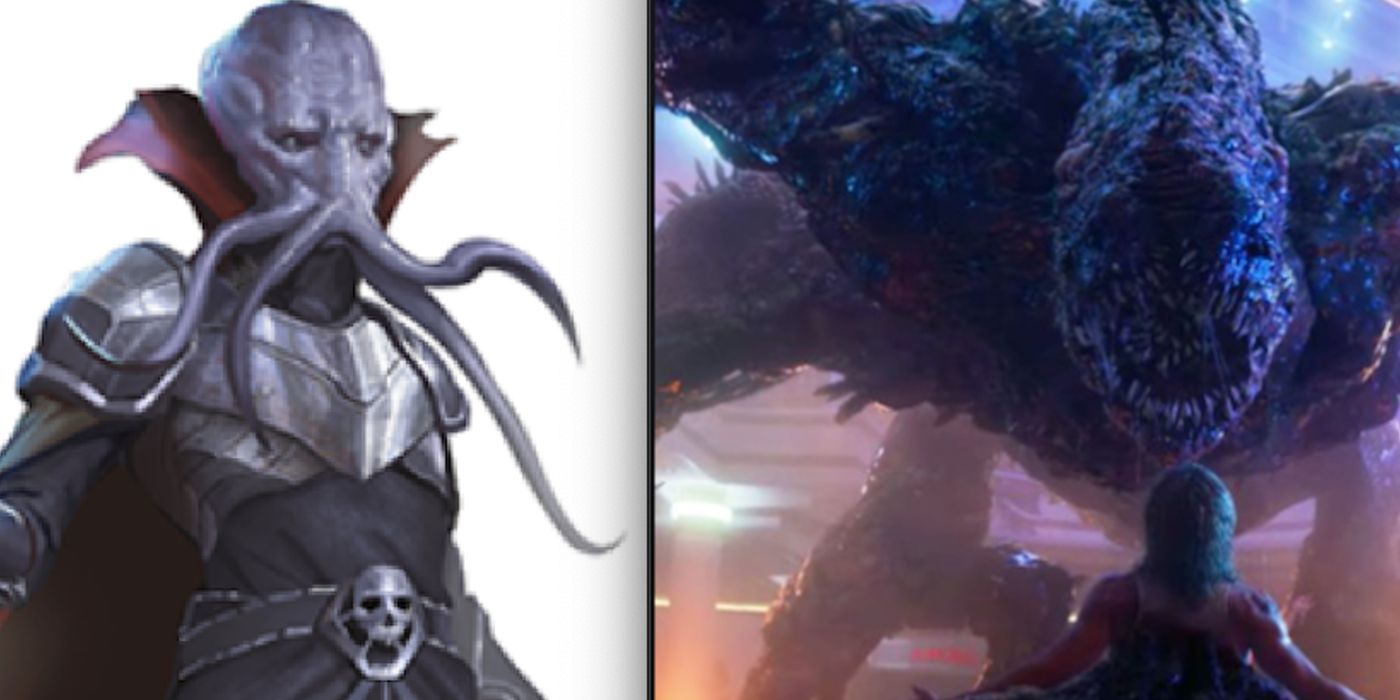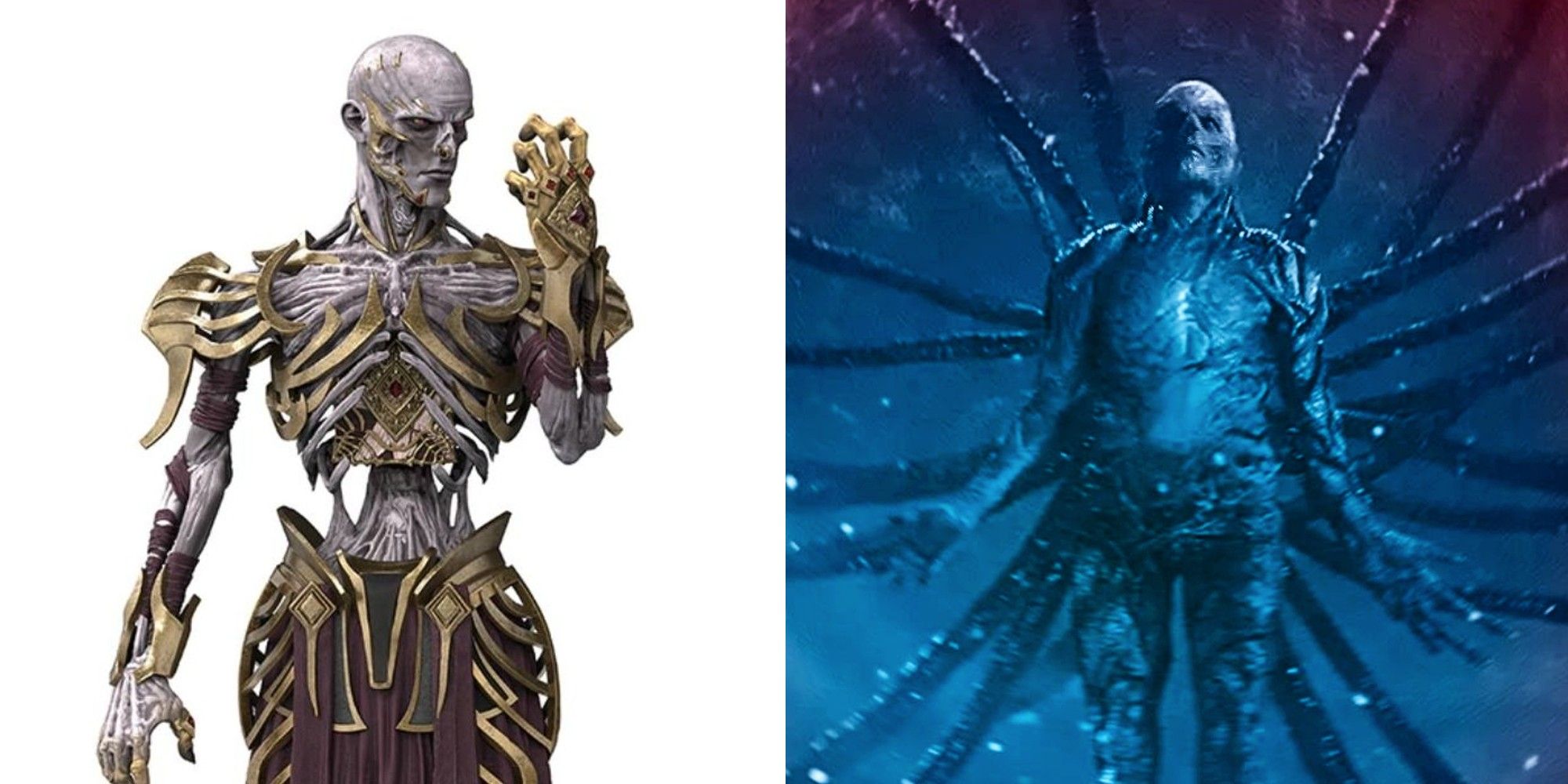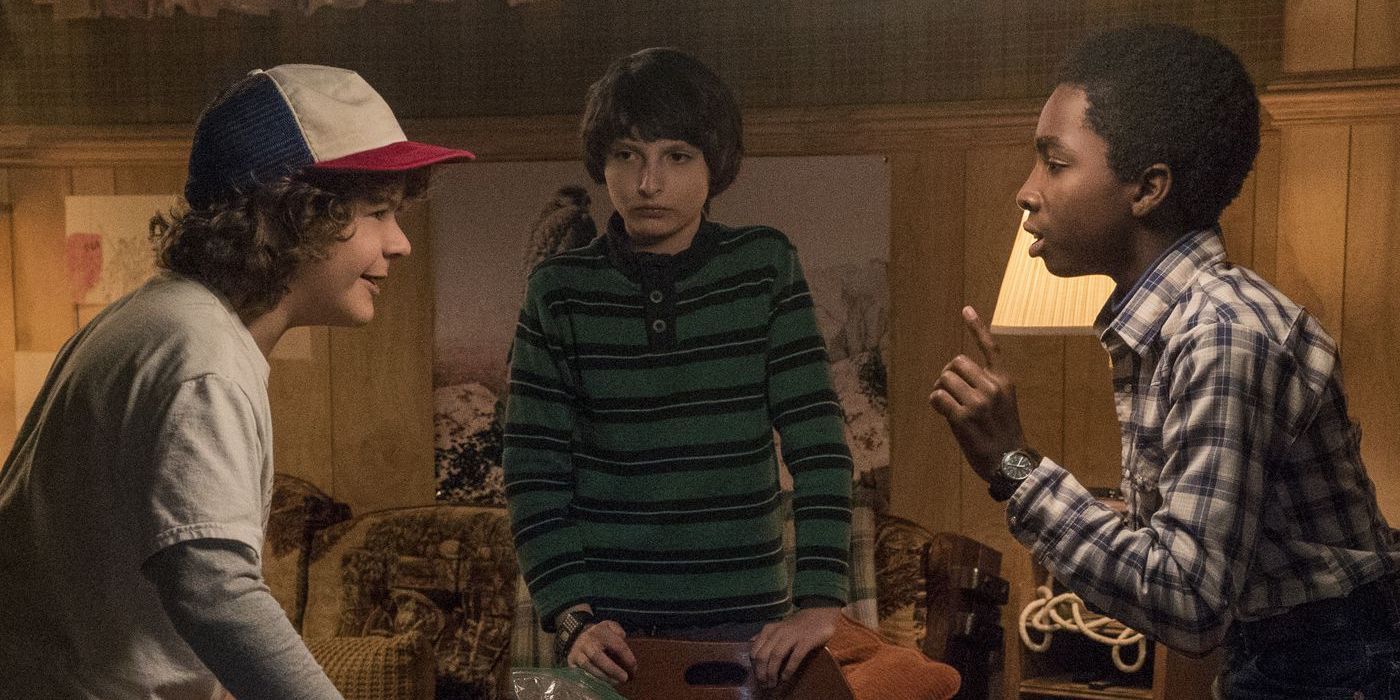Stranger Things is filled with all sorts of references to nerdy lore, but which famous Dungeons and Dragons monsters has it referenced so far? Stranger Things won instant critical praise thanks to the show's unique combination of sci-fi, horror, small-town mystery, and coming-of-age dramedy. Despite the unusual tonal mix, the series has been a smash hit for streaming service Netflix and its creators, the Duffer Brothers. 1980s pop culture crops up constantly in Stranger Things, with the series referencing everything from Aliens to Amblin Entertainment movies to Stephen King and obscure Larry Cohen horror flicks. Even the show's casting owes a considerable debt to the 80s cultural landscape, with Aliens' own Paul Reiser making his show debut in season 2 and The Princess Bride's Cary Elwes taking on a role in Stranger Things season 3. Stranger Things also makes deliberate use of 1980s music, notably in season 4 with its significant incorporation of both Kate Bush's "Running Up That Hill (A Deal With God)" and Metallica's "Master of Puppets."
Despite (or perhaps because of) its debunked allegations of Satanism, one of the most enduringly popular cultural touchstones of the decade is the tabletop role-playing game Dungeons and Dragons. The likable nerds of Stranger Things - consisting of Dustin, Will, Mike, and Lucas - are enthusiastic fans of the game, especially in season 4 when they join Hawkins High's Hellfire Club and protect its Dungeon Master Eddie Munson (Joseph Quinn) from Stranger Things' Satanic panic-fueled manhunt. As a result, they often use the lore of the game to describe and contextualize the many sci-fi monsters that appear around Hawkins. Three of the show’s most notable antagonists are named after famous Dungeons and Dragons monsters, with each of these names being used to represent a different being that comes from the murky netherworld of the Upside Down. Along with the other D&D references seen in Stranger Things, each of the villainous beasts shares notable similarities and differences with their game counterparts.
The Demogorgon
The original Stranger Things villain, the Demogorgon, has been central to the plot of the series since the opening scene of season 1 when it attacked and kidnapped Will. Despite being the main antagonist of the first series (alongside the shady government operatives of Hawkins Lab), the Demogorgon actually looks nothing like its game counterpart at all - a point illustrated by Stranger Things itself. When powerfully psychic heroine Eleven (Millie Bobby Brown) warns the show's young lead Mike that a real monster emerged from the Upside Down, he produces a miniature model of the Dragons beast and dubs it "the Demogorgon". The game’s Demogorgon is a famously difficult demon to beat, boasting a forked tail, tentacles, and two heads in its gorgon-inspired appearance.
The Demogorgon of Stranger Things, meanwhile, resembles a mash-up of 1980s movie monsters more than the Dungeons and Dragons monster that inspired its moniker. The Demogorgon has a relatively humanoid appearance and is diminutive in stature compared to the gigantic D&D foe, standing scarcely taller than a human. The most notably monstrous characteristics are its long claws and giant lamprey-like fanged mouth, neither of which owe their inspiration to the visual representation of Dungeons and Dragons’ Demogorgon.
The Mind Flayer
The second notable Stranger Things monster to draw its inspiration (and in-show name) from Dungeons and Dragons, season 3's spider-like antagonist the Mind Flayer, owes a lot more to its in-game counterpart than just a name. In purely visual terms, Stranger Things season 3's physical manifestation of the Mind Flayer is a mass of writhing, fleshy limbs with a fanged maw, a gruesome creation that calls to mind the work of body horror icons David Cronenberg or FX mastermind Screaming Mad George. However, while the villain may look more like D&Ds’ Gibbering Mouther than the game’s original illustration of the Mind Flayer, the modus operandi of the show’s Mind Flayer is nearly identical to that of its game inspiration.
Dustin describes the Mind Flayer as an inter-dimensional monster whose origin is unknown (even to the beast itself), which enslaves other species by taking control of their brains. That is exactly what the Mind Flayer does, beginning with Billy, Max’s abusive older stepbrother. Billy’s eventual self-sacrifice sees him redeem himself by taking on the Mind Flayer that essentially controlled him as a puppet through the season, proving that while Stranger Things’ Mind Flayer may differ in appearance from the game’s slender, squid-faced humanoid, its function is all but identical.
Vecna
Dustin understandably labels season 4's villain after the immortal lich of Dungeons and Dragons. When naming the villain, Dustin and Eddie recall that Dungeons and Dragons' Vecna is "an undead creature of great power...a spell caster...a dark wizard." Stranger Things also cleverly alludes to D&D by matching Vecna's long-fingered left hand with the description of the infamous "Hand of Vecna," an evil artifact of immense power.
The Hellfire Club campaign in Stranger Things' season 4 premiere is an excellent way to quietly build up Vecna. Firstly, it introduces the Dungeons and Dragons villain as the source of inspiration for Stranger Things' villain's eventual name, as the show has always done. It also includes sly hints like Eleven's failure against Vecna and the "Cult of Vecna," which may play a more significant role in season 5 considering the army of vine-entangled victims Vecna has built up in his Mindscape. Stranger Things explains that Vecna is the primary cause of everything Upside Down-related going on for the past four seasons by showing that he created the Mind Flayer, hunted Eleven down, and effectively shaped the Upside Down's alternate Hawkins.
Other Dungeons & Dragons References
The Demogorgon, the Mind Flayer, and Vecna may be the three monsters who gained their own Stranger Things incarnations, but they’re not the only Dungeons and Dragons antagonists referenced in the series. During the show’s Christmas campaign, Lucas successfully decapitates the Thessalhydra, cutting off the monster’s seven heads (the game’s monster has eight, which may have been foreshadowing used to imply some foes thought to be vanquished aren’t really dead - like Vecna). Meanwhile, the end of Stranger Things season 1 saw the show drop a ton of hints about the then-unreleased season 2 when the central quartet was frustrated by an annoyingly brief and unresolved campaign. At the end of their campaign and the first 8 episodes of the series, the boys collectively bemoan the early end of the game.
They demand answers about unresolved mysteries such as the “weird flowers in the cave, the lost knight, and the proud princess.” Upon a rewatch of this scene, many viewers noted that the “weird flowers in the cave” likely refer to the Upside Down’s creepy vines, which proved to be a formidable problem for Chief Hopper during season 2 and whose destruction leads the cast to later fully realize that Will Byers is psychically connected through Vecna to the Upside Down.
The Lost Knight, meanwhile, could be read as either Eleven, who spends much of season 2’s action lost and away from her friends, or poor Bob Newby (Sean Astin), the short-lived love interest of Winona Ryder's Joyce Byers, who died all too soon. Meanwhile, the Proud Princess could refer either to El again, whose frustrating misinterpretation of Mike’s interactions with Max (Sadie Sink) leads to much of her season 2 isolation. It could also refer to Max herself, who spent much of season 2 wanting to be embraced by the group while refusing to acknowledge that she likes hanging around with Dustin, Mike, Lucas, and Will for much of the action of Stranger Things season 2.

